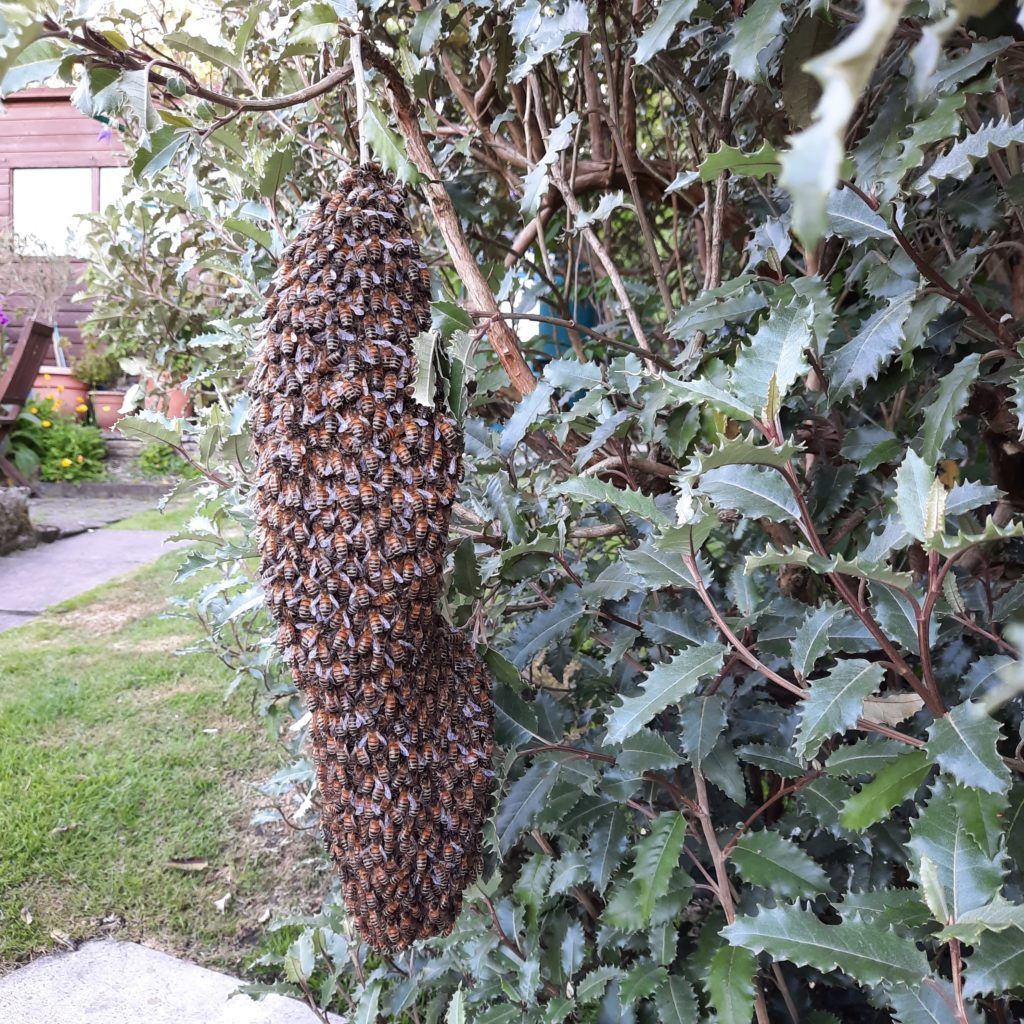Think you’ve got one? It will roughly look like this.

A swarm of bees will usually arrive in a “cloud of bees” with a very loud buzzing sound. They will settle in a clump, clustering together on a tree, post or wall (see picture). Once a swarm settles, there will still be bees flying to and from the swarm but they generally remain as in a cluster for a number of hours often overnight.
In this state, it is possible for a beekeeper to collect a swarm. Volunteer beekeepers are willing to attend your property to collect a swarm and take it away that evening or night, once that are all captured.
If you think you have a swarm, please check first that what you are seeing is definitely honey bees. Sometimes people confuse wasps and bumble bees with honey bees. Please check the BBKA swarms help for further advice on the difference between honey bees, wasps and bumble bees. Beekeepers can only remove honey bees and cannot remove any other insects, including wasps, hornets or bumblebees.
If you are fortunate enough to have found a bumblebee nest, please leave it where it is if at all possible. The natural lifespan of a bumblebee colony is one summer, they rarely cause a problem when left alone. Bumblebees and other bee species are beneficial insects that have a very important part to play in the process of pollination, and we should welcome them!
Honey bee swarms that have formed in a cluster are usually calm and are unlikely to sting unless provoked they have other things on their minds. Maintain a safe distance from them, contact a swarm collector on the swarm collectors’ list, and wait for them to arrive.
There are limits : beekeepers will NOT be able to collect:
- Swarms that are located in an unsafe location – e.g. high trees, unsafe roofs
- Swarms that have taken up residence in an inaccessible area, such as an enclosed roof space, a chimney, or inside walls. Swarm collectors will give advice once they have information. These days a picture send via WhatsApp or some such, saves a lot of time and confusion. In some situations the owner of a property may need to have the bees destroyed by a licensed pest controller.
The West Wilts Branch swarm collection co-ordinator is David Raines. If you are unable to find a swarm collector from the list, or you wish to ask about a swarm, please contact David by phone on 07711 018440 for advice.
